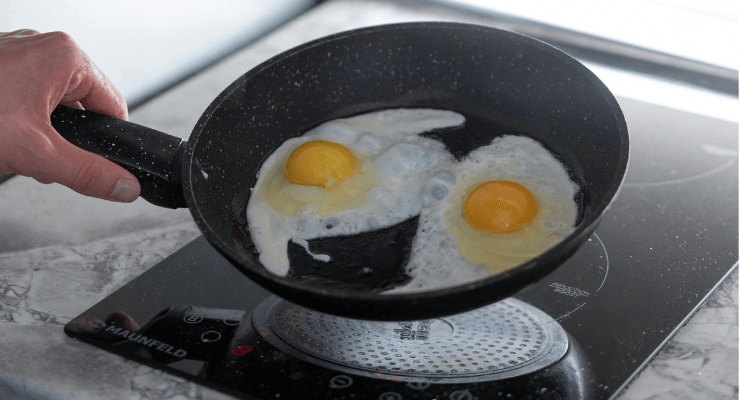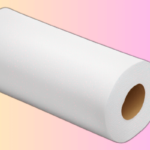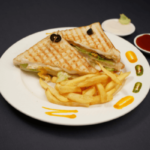Induction cooking has transformed modern kitchens with its efficient heating, energy-saving features, and precise temperature control. However, to fully enjoy these benefits, you need the right cookware, especially when it comes to frying pans. Choosing the best non-stick frying pan for induction cooktops is essential for a smooth cooking experience, as not all pans are designed to work with induction.

In this comprehensive guide, we will walk you through everything you need to know about finding the perfect non-stick frying pan for induction cooking, without diving into specific product recommendations. Instead, this article will provide insights on what to look for, common materials, types of coatings, and how to care for your frying pan to ensure its longevity. This way, you’ll have all the information needed to make a well-informed choice.
Understanding Induction Cooking
Before diving into frying pans, it’s essential to understand how induction cooking works and why it requires specific cookware.
Unlike traditional gas or electric stoves, induction cooktops use electromagnetic fields to heat cookware directly. This means the cooktop itself remains cool, while the pan heats up quickly. Because induction cooktops rely on magnetic properties, your cookware must have a ferrous (magnetic) base, such as stainless steel or cast iron. Cookware that lacks a magnetic base simply won’t work on an induction stove.
Why Choose a Non-Stick Frying Pan?
Non-stick frying pans are popular in every kitchen for good reason. They are designed with a coating that prevents food from sticking to the surface, which has numerous advantages:
– Ease of Use: Non-stick pans make cooking more convenient, as food slides right off the surface without sticking. This is especially helpful when cooking delicate items like eggs, pancakes, or fish.
– Healthier Cooking: Non-stick surfaces allow you to cook with less oil or butter, making meals healthier.
– Effortless Cleaning: Since food doesn’t stick to the surface, cleaning up after cooking is a breeze. A gentle wipe with a sponge is usually all that’s needed.
– Energy Efficiency: Non-stick frying pans heat up quickly and evenly, reducing cooking times and saving energy.
These benefits make non-stick pans a great choice for everyday cooking. However, when choosing a frying pan for induction, you need to ensure it’s compatible with your cooktop.
Top 5 Best Non-Stick Frying Pans for Induction Cooktops
HexClad Hybrid Nonstick Frying Pan
The HexClad Hybrid Nonstick Frying Pan combines innovative design with practical functionality. Its unique tri-ply construction features aluminum sandwiched between two layers of stainless steel, creating a laser-etched hexagonal nonstick surface.
This construction delivers the searing power of stainless steel, the durability of cast iron, and the easy cleanup of traditional nonstick pans. At 12 inches in diameter, this versatile pan is perfect for frying, sautéing, and preparing one-pot meals. It is compatible with all cooktops, including induction, and is dishwasher and oven safe up to 500°F.
Pros
Cons
Utopia Kitchen Non-Stick Frying Pan Set
The Utopia Kitchen Non-Stick Frying Pan Set includes 8-inch, 9.5-inch, and 11-inch pans, designed to meet diverse cooking needs. These pans feature a durable, lightweight aluminum construction with a high-quality double-coated nonstick interior, ensuring easy food release and cleanup.
The induction-compatible bottom makes them suitable for various stovetops, including electric and ceramic. The Bakelite handles offer a comfortable and safe grip, while the pans are PFOA, lead, and cadmium-free, promoting healthier cooking.
Pros
Cons
All-Clad HA1 Hard Anodized Nonstick Fry Pan Set
The All-Clad HA1 Hard Anodized Nonstick Fry Pan Set (8-inch and 10-inch pans) offers superior performance and versatility. Made with a heavy-gauge aluminum and stainless-steel base, these pans ensure even heat distribution for perfectly cooked meals.
The durable PTFE nonstick coating guarantees easy food release and long-lasting nonstick performance. With a sleek design, contoured handles, and compatibility with all stovetops, including induction, this set is perfect for a wide range of cooking needs. It is oven-safe up to 500°F and dishwasher-safe, making it convenient and easy to maintain.
Pros
Cons
SENSARTE 12.5-Inch Nonstick Frying Pan Skillet
The SENSARTE 12.5-Inch Nonstick Frying Pan Skillet is a versatile and healthy choice for your kitchen. Featuring a Swiss ILAG granite nonstick coating, this pan is PFOA-free and SGS approved, ensuring safe and healthy cooking.
Its cast aluminum construction ensures durability, while the high magnetic conductive stainless steel base allows for even heat distribution and compatibility with all stovetops, including induction. The woodgrain Bakelite handle remains cool to the touch and adds comfort during cooking. Plus, the pan is easy to clean, either by hand or in the dishwasher.
Pros
Cons
OXO Frying Pan Enhanced 12” Skillet
The OXO 12-Inch Enhanced Frying Pan is a top-rated, PFAS-free nonstick skillet designed for both home cooks and culinary enthusiasts. Its diamond-reinforced ceramic coating ensures exceptional nonstick performance and durability, making it scratch-resistant and long-lasting.
The hard-anodized construction provides excellent heat distribution, while the ergonomic stainless steel handle offers a secure grip. This versatile skillet is oven-safe up to 430°F and dishwasher-friendly for easy cleanup, making it a must-have in any kitchen.
Pros
Cons
Key Features to Look for in a Non-Stick Frying Pan for Induction
Choosing the right non-stick frying pan can be overwhelming with so many options available. Here are some key factors to consider when buying one for induction cooking:
1. Induction Compatibility
Ensure compatibility, look for pans with a magnetic base. Typically, this base is made from stainless steel, cast iron, or another magnetic material. Some pans are clearly labeled as induction-compatible, making it easier to identify them. You can check this by placing a magnet on the bottom of the pan – if it sticks, the pan is suitable for induction cooking.
2. Material and Construction
Non-stick frying pans are often made from different materials, each offering unique benefits:
Stainless Steel with Non-Stick Coating: These pans offer durability, excellent heat conduction, and are typically induction-compatible due to their magnetic base.
While aluminum itself is not magnetic, manufacturers often bond it with a magnetic base to make it suitable for induction. Hard-anodized aluminum provides excellent heat retention and is resistant to scratches.
Cast Iron with Enamel Coating: While traditional cast iron is induction-friendly, it’s heavy and may require more maintenance. Enamel-coated cast iron frying pans offer a non-stick surface and are easier to care for. However, they can be more expensive and less convenient due to their weight.
3. Non-Stick Coating Quality
The non-stick coating is the defining feature of these pans, but not all coatings are created equal. Here are the most common types:
Teflon (PTFE): Teflon is one of the most well-known non-stick coatings. It offers excellent food release and ease of cleaning. However, it’s essential to avoid overheating Teflon pans, as they can release harmful fumes if exposed to temperatures above 500°F (260°C).
Ceramic Coating: Ceramic non-stick coatings are a popular alternative to Teflon. They are free from PFOA and PTFE, making them a healthier option. Ceramic-coated pans perform well at lower to medium temperatures but may wear down over time if exposed to high heat.
Titanium-Reinforced Coating: Some non-stick pans feature coatings reinforced with titanium for added durability. These coatings offer excellent scratch resistance and enhanced longevity while maintaining the non-stick benefits.
4. Ergonomics and Handle Design
Comfortable, sturdy handles make a big difference in your cooking experience. Look for pans with ergonomic handles that stay cool to the touch during cooking. Some pans feature riveted handles for added stability, while others may have silicone-coated handles for a comfortable grip. The design should also allow for easy handling, especially when transferring food from the stovetop to the oven or countertop.
5. Oven-Safe Features
Many non-stick frying pans are oven-safe, but it’s essential to check the maximum temperature they can withstand. Some pans are safe up to 350°F, while others can handle temperatures as high as 500°F. This feature is particularly useful if you want to finish cooking or bake dishes in the oven.
6. Size Options
Frying pans come in various sizes, ranging from small 8-inch pans to larger 12-inch models. The size you choose depends on your cooking needs and the number of people you typically cook for. If you frequently cook large meals or prefer having space to move food around the pan, a larger size is ideal.
Benefits of Using a Non-Stick Frying Pan on an Induction Cooktop
Non-stick frying pans designed for induction cooking offer several unique benefits:
Energy Efficiency: Induction cooking heats the pan directly, reducing energy waste and cooking time. Combined with the non-stick surface, which requires less oil or butter, you can cook more efficiently.
Precise Temperature Control: Induction cooktops offer precise control over heat levels, allowing you to cook delicate foods without burning or sticking.
Safety: Because induction cooktops only heat the pan and not the cooktop itself, they are safer to use than gas or electric stoves. The pan heats up quickly, but the surrounding surface stays cool, reducing the risk of burns.
Easy Cleanup: Non-stick pans are already easy to clean, but using them on an induction cooktop means fewer spills or food burns, leading to an even easier cleanup process.
Caring for Your Non-Stick Frying Pan
To maximize the lifespan of your non-stick frying pan, proper care is essential. Here are some tips to keep your pan in great condition for years to come:
Avoid High Heat: Non-stick coatings can deteriorate if exposed to very high heat, especially Teflon coatings. Stick to low or medium heat for most cooking tasks to protect the non-stick surface.
Use the Right Utensils: Metal utensils can scratch the non-stick coating, so it’s best to use wooden, silicone, or plastic utensils. Scratches can reduce the pan’s non-stick performance over time.
Hand Wash When Possible: Even if your frying pan is labeled as dishwasher-safe, hand washing with a soft sponge and mild soap is the best way to preserve the non-stick coating. Dishwashers can be harsh on the coating, causing it to wear out faster.
Avoid Cooking Sprays: Aerosol cooking sprays can leave a sticky residue that is hard to clean and may damage the non-stick surface.
Proper Storage: When storing your non-stick frying pans, avoid stacking them without protection. Placing paper towels or pan protectors between them will prevent scratches and damage to the non-stick coating.
Conclusion:
Selecting the best non-stick frying pan for induction cooking requires careful consideration of factors like material, coating quality, compatibility, and overall design. By focusing on these features, you’ll be able to find a pan that suits your cooking style, is easy to use, and provides lasting durability.
This is answer
As an Amazon Associate, I earn from qualifying purchases.



